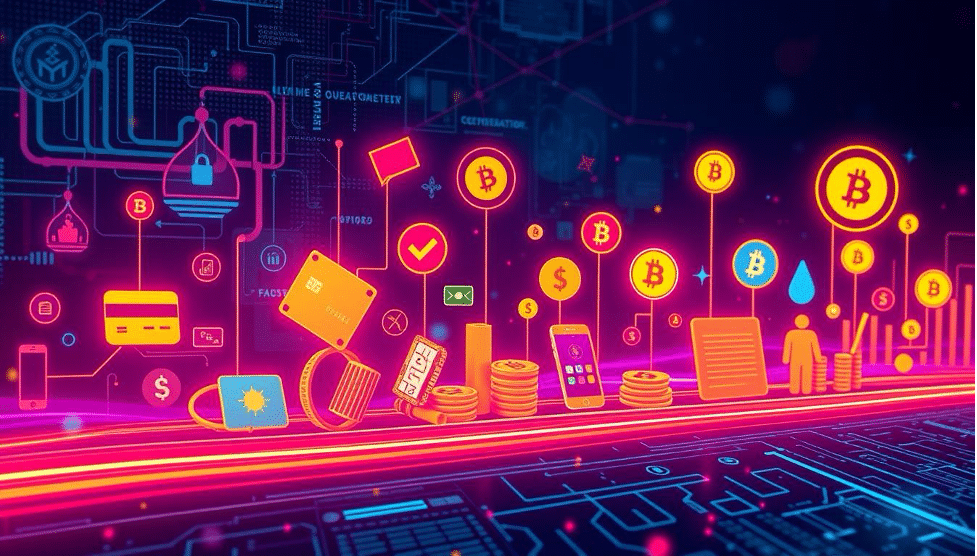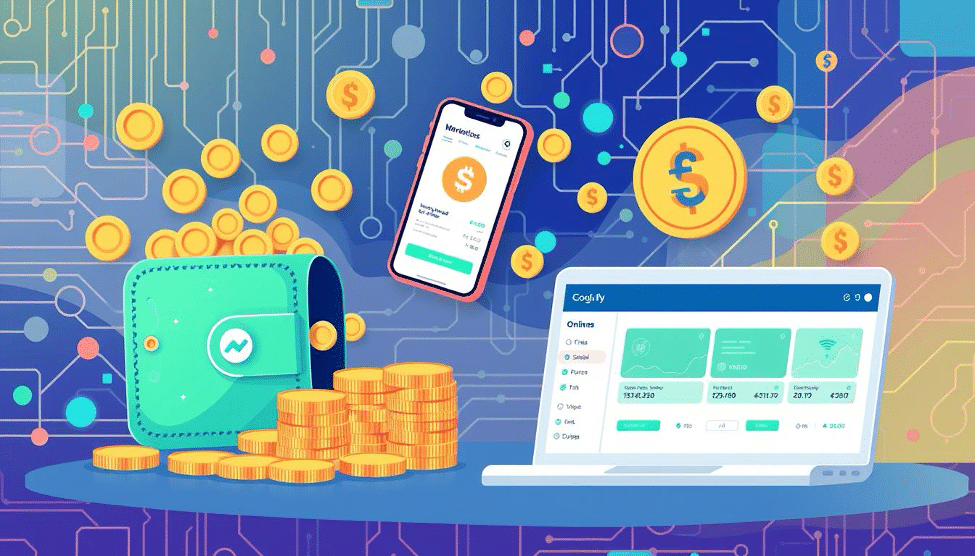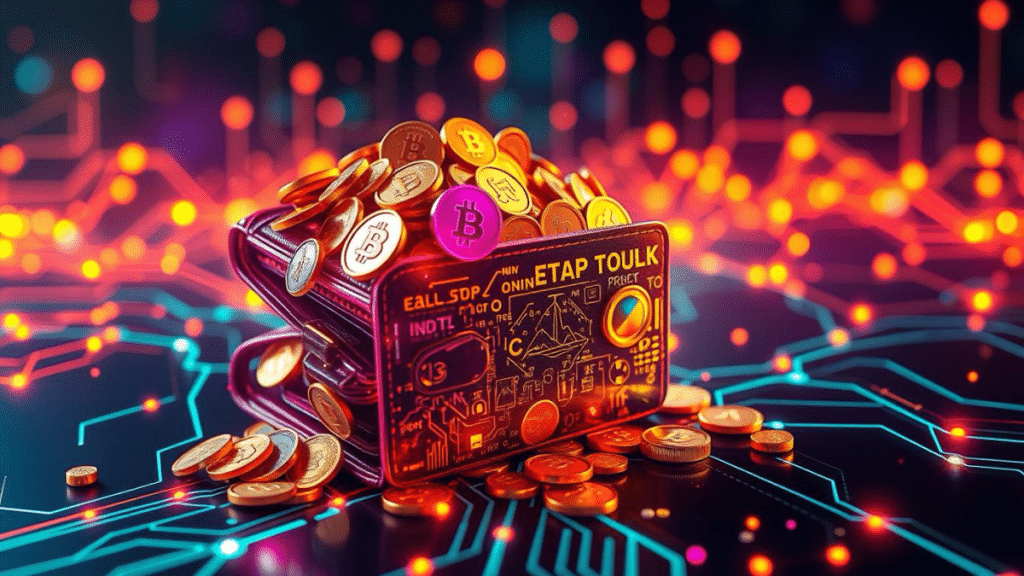Digital transactions are changing how we shop online. Micropayment systems let us make small payments worldwide. This is a big step forward in digital money.
Now, we can use new ways to make money online. Creators, service providers, and users can all benefit. This makes online deals easy and cheap.
Modern micropayments offer businesses new ways to make money. They make small payments possible, opening up new economic paths. This is something old money systems can’t do.
From streaming to independent creators, micropayments are making a difference. They make it easy to exchange money in ways we couldn’t before.
As online shopping grows, micropayments are key. They help make money more accessible and create new chances in our connected world.
Understanding the Evolution of Digital Payment Systems

The world of digital payments has changed a lot in the last 30 years. We’ve moved from old bank transfers to modern mobile payments. These changes have made how we pay for things much easier.
Online banking started to grow in the late 1990s. PayPal was a big step forward, letting people send money online. This led to the idea of mobile payments, making money transactions smoother.
Mobile payments changed everything. With smartphones, we can now pay instantly and track our spending easily. Services like Apple Pay and Google Pay made paying without cash safer and more convenient.
New tech has made digital payments better. Things like machine learning and blockchain have improved security and speed. These updates have made paying online faster and safer for everyone.
The growth of digital payments shows how tech keeps improving. From basic online banking to advanced mobile systems, the field keeps getting better. This makes paying for things easier and more efficient for all of us.
Cashing out Small Payments: A Comprehensive Guide

Digital wallets have changed how we handle small payments. Now, transferring small amounts of money is easy across different platforms. Knowing about payment processing helps people make the most from digital earnings.
When looking into 소액결제 현금화 (small payment cashout), you have many choices. Bank transfers are traditional, allowing direct deposits. Cryptocurrency exchanges are for those who like digital currency. Mobile money services offer quick withdrawals for users worldwide.
When withdrawing micropayments, consider fees, processing times, and reliability. Some wallets charge little, while others have complex fees. It’s smart to compare services to find the best deal for you.
Payment platforms keep improving, making withdrawals smooth. New tech makes getting your money fast and safe. Looking into different digital wallets can help you get the most from your small payments.
Choosing the right way to withdraw depends on your needs, where you are, and how often you make transactions. By carefully looking at your options, you can manage your digital earnings well.
The Impact of Blockchain on Micropayment Solutions
Blockchain technology is changing how we do small digital payments. It makes transactions safe and fast, no matter where you are in the world. This is thanks to its decentralized system.
Smart contracts are key in making micropayments work automatically. They are like digital agreements that check transactions on their own. This means no need for middlemen and faster payments.
Using blockchain for mobile payments is becoming popular. It makes paying with phones cheaper and easier. This technology helps users deal with money in a quicker and clearer way.
Blockchain keeps small payments safe from fraud. It does this by spreading out payment records on many servers. This makes transactions open and safe from hackers.
Blockchain is changing how we think about money online. As cryptocurrencies grow, we’ll see better and cheaper ways to pay. This will open up new possibilities for businesses and people alike.
Mobile Payment Integration and Accessibility
Mobile payment apps have changed how we handle small transactions. Contactless payments are now common, making purchases quick and secure with our smartphones. NFC technology is key to these smooth interactions, changing how we deal with money.
The rise of mobile wallets has made converting small payments easy. With just a tap or scan, users can finish transactions fast. This has made handling small money matters easier for more people.
Smartphones have helped make mobile payments popular. Today’s apps are easy to use, making managing small money tasks simple and safe. Users can track spending, split bills, and handle small transactions with ease.
Security is a big deal for mobile payments. They use advanced encryption and biometric checks to keep your money safe. NFC technology makes these payments fast and secure, building trust in digital payments.
As mobile tech gets better, we’ll see new ways to handle small payments. The mix of mobile apps, NFC, and easy-to-use interfaces is making our financial world more connected and efficient.
Content Monetization Through Micropayments
Digital content monetization has changed how creators make money online. Micropayment platforms let writers, artists, and digital producers earn through pay-per-view and small transactions.
The rise of mobile micropayment cashout has changed how we consume content. Creators can now sell small pieces of content for a few bucks. This lets viewers buy specific articles, videos, or digital experiences.
Old subscription models are being replaced by micropayments. Now, readers can buy exactly what they want. This makes content more accessible and benefits both creators and viewers.
Micropayment platforms make it easy for creators to monetize their content. They can set low prices for quick, risk-free buys. These platforms take a small cut of each sale, helping everyone involved.
Using pay-per-view content can help creators earn more. By offering high-quality, targeted content, they can build steady income. This way, they can keep up with what viewers want.
Global Adoption and Market Trends
The micropayment market is growing fast worldwide. International transactions are changing how we handle small money exchanges. Places like Asia and Europe are at the forefront, using new ways to make payments across borders.
Digital platforms see the value in using “cashing out small payments” strategies. New markets are open to micropayment tech, helping people who can’t use regular banks. Mobile payments are making this change happen even faster.
Studies show more people are using micropayments in different fields. Tech companies are building better systems for easy international payments. Payment gateways are making it simpler and cheaper to send money across borders, helping small businesses and people too.
People want easier and quicker ways to pay. The micropayment world is growing, thanks to new tech and more online connections. Businesses that get these trends will likely do well in the fast-changing digital market.
Regulatory Framework and Compliance
Understanding micropayment regulations is complex. Financial compliance standards are key. AML policies protect digital payments from risks.
Financial institutions need strong frameworks for secure transactions. This ensures all payments are transparent and safe.
Worldwide, regulatory bodies are creating detailed guidelines for micropayments. These rules aim to stop money laundering and protect data. They also keep the financial system safe.
Platforms must use advanced tech to follow these rules. This includes smart screening and real-time monitoring. The aim is to balance innovation with safety.
Handling small transactions is tricky. Institutions must find a balance between security and user ease. New tech like blockchain helps with this.
It’s vital for businesses in digital payments to know the rules. They must keep up with changes, invest in compliance, and be open about finances. This builds trust with both customers and regulators.
Benefits and Challenges for Businesses
Businesses looking into micropayment models find a world full of chances and hurdles. Digital spaces are finding new ways to make money with small transactions. The small payment cashout method lets companies make money from tiny bits of content and services.
Transaction costs are a big deal for businesses using micropayments. Old payment systems make small deals too expensive. New tech is making it easier and cheaper to handle tiny transactions.
Getting customers is changing with micropayments. Businesses can now attract people who don’t want to spend a lot. This makes it easier for people to buy things, reaching more customers.
Putting micropayments into action is hard. Companies need strong systems that can handle lots of small deals safely and well. They also need to grow with more deals coming in.
Using micropayments right needs smart planning. Businesses have to think about tech, user experience, and making money. Those who get it right can open up new ways to make money online.
Consumer Behavior and Payment Preferences
Digital payment habits are changing fast. Today, people want easy, safe ways to handle money. They want their financial dealings to be simple and secure.
Mobile payment options like cashing out mobile phone small payments are becoming popular. People like quick, easy payments. Using smartphones to buy things makes transactions faster and smoother.
Trust is key in digital payments. Users want safe, clear platforms for their money. New payment tech must focus on security to gain trust and use.
Younger people are leading the way in digital payments. They like easy-to-use apps and fast transactions. They also want tools to manage their money well.
Knowing what consumers want helps businesses make better payment solutions. By focusing on safety, ease, and good user experience, companies can meet market needs.
Social Impact and Financial Inclusion
Micropayments are changing how people without bank accounts access money. They make small digital payments possible, breaking down old barriers. Now, microfinance uses these new techs to help people in poor areas.
Financial inclusion is more than just making payments. It opens doors to the digital world for those without bank accounts. People in rural areas and those with low incomes can join the digital economy. This makes it easier for them to start small businesses or save money.
Mobile payment solutions are changing how people without banks use money. Microfinance groups use digital tools to give out small loans and teach about money. These tools help people grow their businesses and improve their lives in areas left out of the financial world.
Micropayments help fight poverty by giving people financial tools. They can start small businesses, pay for school, and become more financially stable. Digital payments make it easier for people to get ahead and move up in society.
Worldwide, efforts to include more people in finance show how micropayments can change lives. As these systems get better, they will help more people find economic opportunities and gain financial power.
Conclusion
The digital economy is on the verge of a big change thanks to micropayment technologies. These innovations are changing how we use digital services. They are breaking down old financial barriers and opening up new ways to connect globally.
Small transactions are becoming key in making the economy more open to everyone. Blockchain and mobile payments are changing how we do financial deals. They make it easier for people and businesses to exchange money, no matter where they are.
As micropayments keep getting better, we’ll see big changes in how we make money from digital content. New tech like AI, blockchain, and mobile apps will make micro-transactions even easier. This will lead to more flexible and user-friendly economic systems.
It looks like micropayments will be more important in linking global markets and helping creators. They will also make financial dealings smoother. The future looks bright, with small transactions at the heart of a more inclusive economy.
